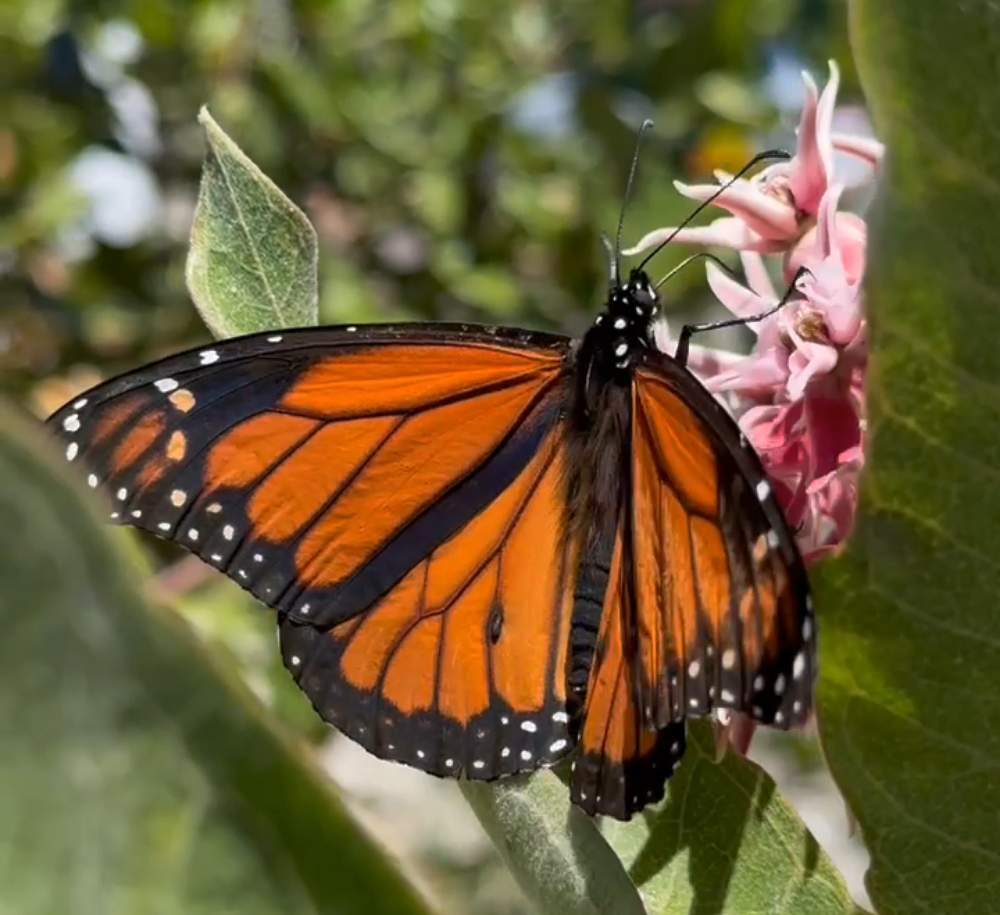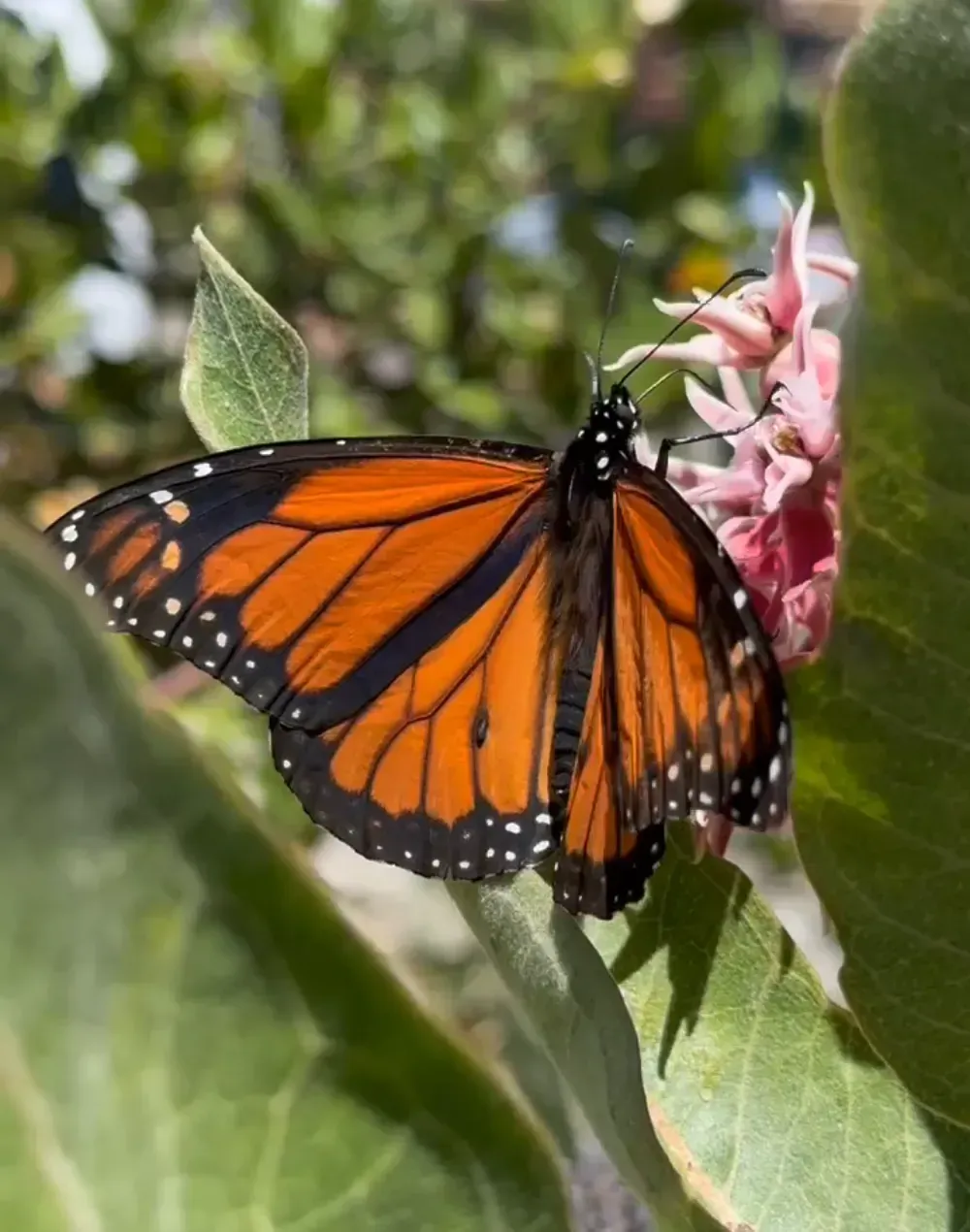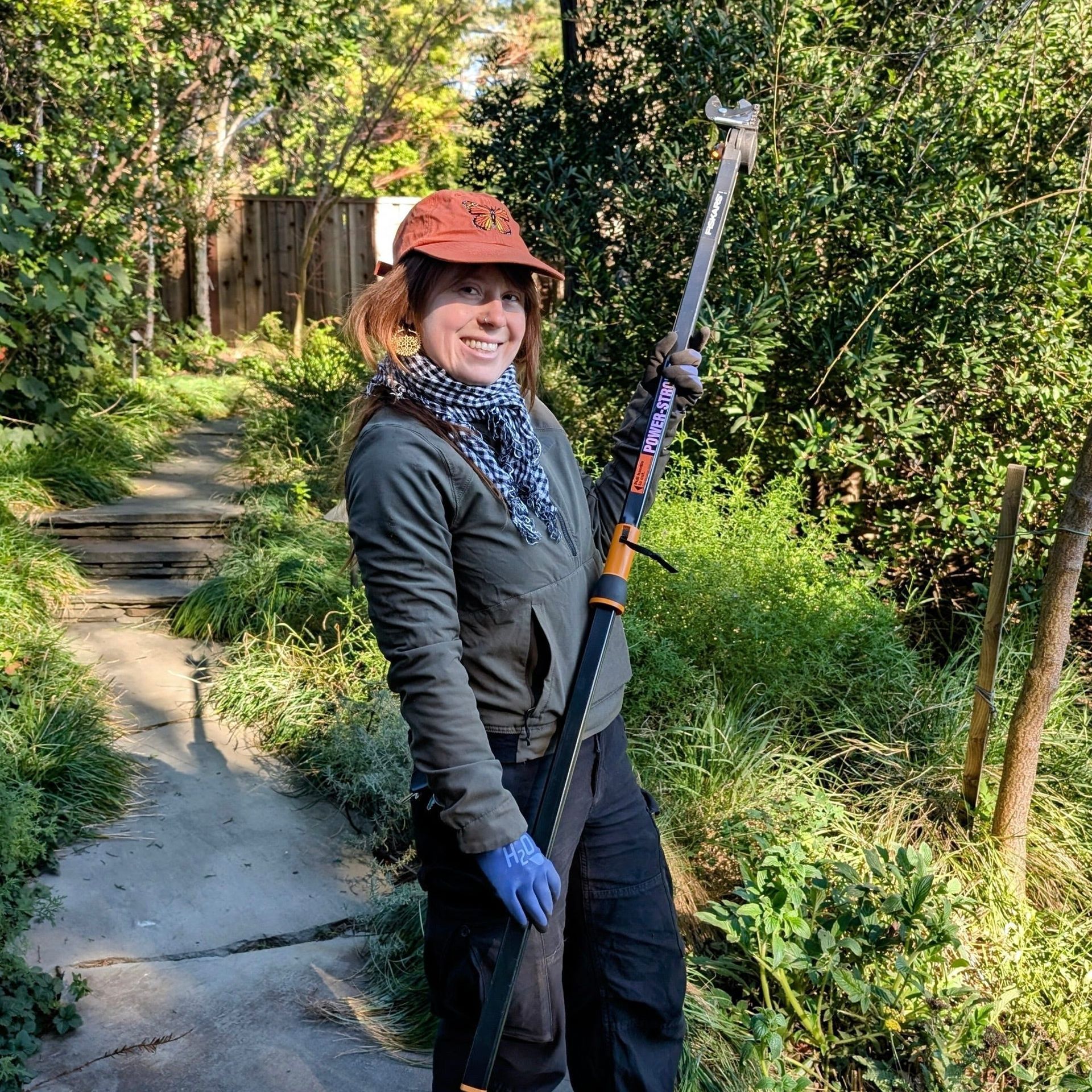
By Andrea Hurd
•
November 22, 2025
This past October, I was fortunate enough to go to the village of Deia in Mallorca to study the ancient local traditional dry stone building. I first came to Deia to study stone working in 2007, with The Stone Foundation for their annual Dry Stone Symposium . This was the first of several Symposiums and International training opportunities in the craft of dry stone work that I would have the privilege of attending over the next several years. Each of the workshops in Deia that I have attended (three total), were led by master stonemason, Lluc Mir, Founder of the Gremi de Margers .
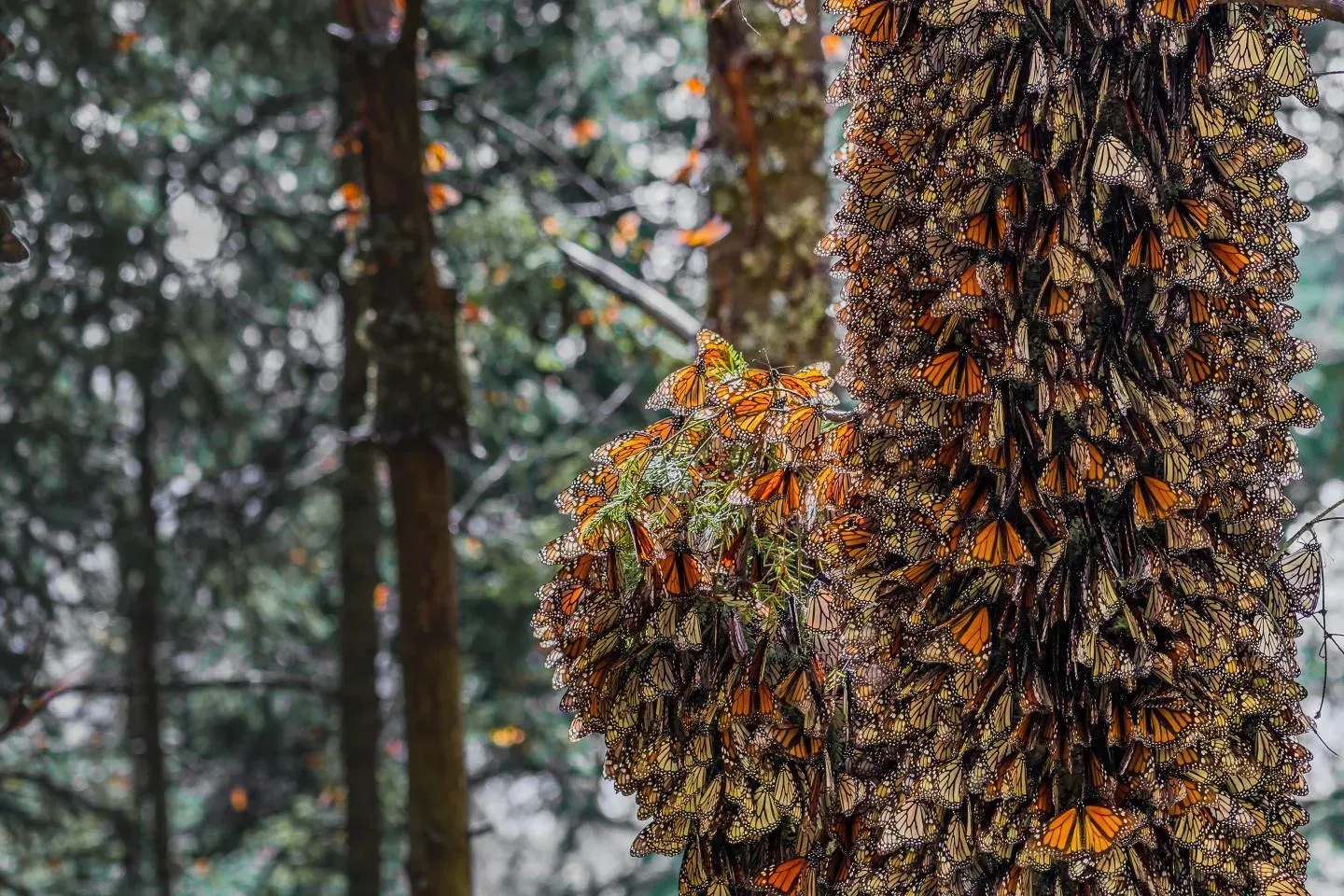
By Andrea Hurd
•
November 1, 2025
Today, the Monarch butterfly migration that goes from Canada and the Northern Continental US, to their overwintering sites in Central Mexico is just about completed. November 1st also coincides with the annual Dia de los Muertos celebrations, observed in Mexico, the US, and other parts of the world. This annual return of the Monarch butterflies to their winter home is interpreted by the Purépecha of Michoacán and the Mazahua of Estado de México as the ancestors returning to visit their loved ones still on earth. The sheer number of butterflies, amounting to the millions, amassing in the Oyamil Fir trees of the region is reported to be stunning as well as magical. It is no wonder that in Mexico, people are inspired by the visually stunning return of the Monarchs as a connection between the butterflies and their ancestors returning home.
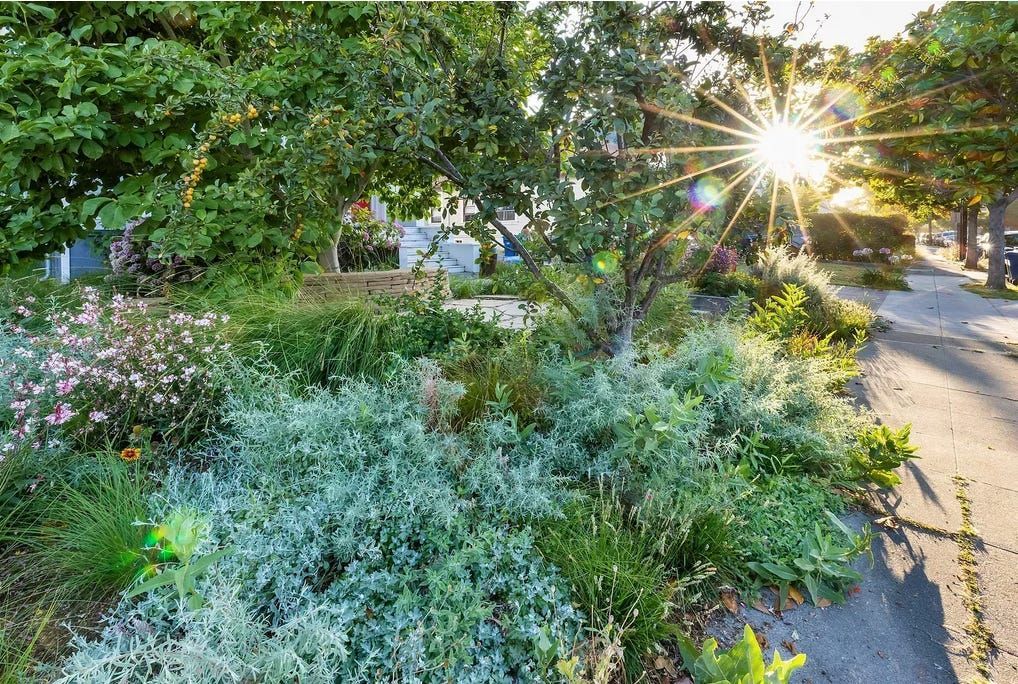
By Andrea Hurd
•
July 12, 2025
As summer unfolds, we find ourselves savoring the simple, joyful moments that our gardens bring. This season beautifully highlights our ongoing commitment to supporting urban wildlife habitats. It’s such a joy to watch butterflies dance through the flowers, birds flit among the branches, and bees busily explore each blossom. Creating gardens that nurture life is one of the most rewarding parts of being a gardener. The Beauty and Benefits of Meadows One of the best ways to invite butterflies, and other pollinators, into your garden is by planting a meadow. Not only are meadows breathtakingly beautiful, but they also provide a vital habitat for a wide variety of wildlife. A meadow’s open structure—filled with a mix of grasses, annuals, and perennials—creates a welcoming space for butterflies to find food and shelter. From marshy wetlands and mountain slopes to deserts and beyond, meadows are a part of natural landscapes all over the world. Perhaps that’s why we feel so connected to them. Lawns and open parks echo this connection, offering a familiar sense of peace and wellness that meadows inspire. Whether nestled in a wild landscape or blooming in a city garden, meadows offer butterflies both food and shelter. The greater the diversity of flowers, especially those with long and overlapping bloom times, the more butterfly species your garden will attract and support.

By Andrea Hurd
•
June 9, 2025
CHECK YOUR SOIL! Isn’t it great to feel the longer and warmer days of late Spring? I love the feeling of going outside and seeing the sun, shining brightly on all of the green leaves and beautiful flowers. It is so wonderful to feel the glow of summer approaching. What a joy to get caught up in that glow, while we watch the gardens grow gorgeously. However, that joy makes it easy to forget that here in the Bay Area, we are entering the months long dry season. Our Mediterranean climate shifts this time of year, which can transform gardens from showing lots of flowering and new green growth, to gardens where soils and plants become dry and damaged. This transition can lead to health issues in the garden over the coming weeks and months. While plants are still thriving from the lovely winter rains, the soils are now drying out. We often don’t realize that the soils are becoming too dry because at this time of year, it takes plants longer to show signs of stress. However, if we know what is about to come, we can stay ahead of the dry season and the damage that hydrophobic soils can do to our garden.

By Andrea andrea
•
May 3, 2025
With the warmer temperatures and longer days, gardens are literally bursting with hope. New leaves unfurl and early blooms emerge under the lengthening days and warming temperatures. April never fails to inspire me with its magical expression in the natural world. Each year, as this phenomenon occurs, I am delighted by the immense force that nature has to replenish and re-emerge anew. Being able to count on the small miracles of leafing out and blooming helps to give stability in an unstable world. Tending a garden is not only therapeutic for our soul, but also will help heal your local environment.
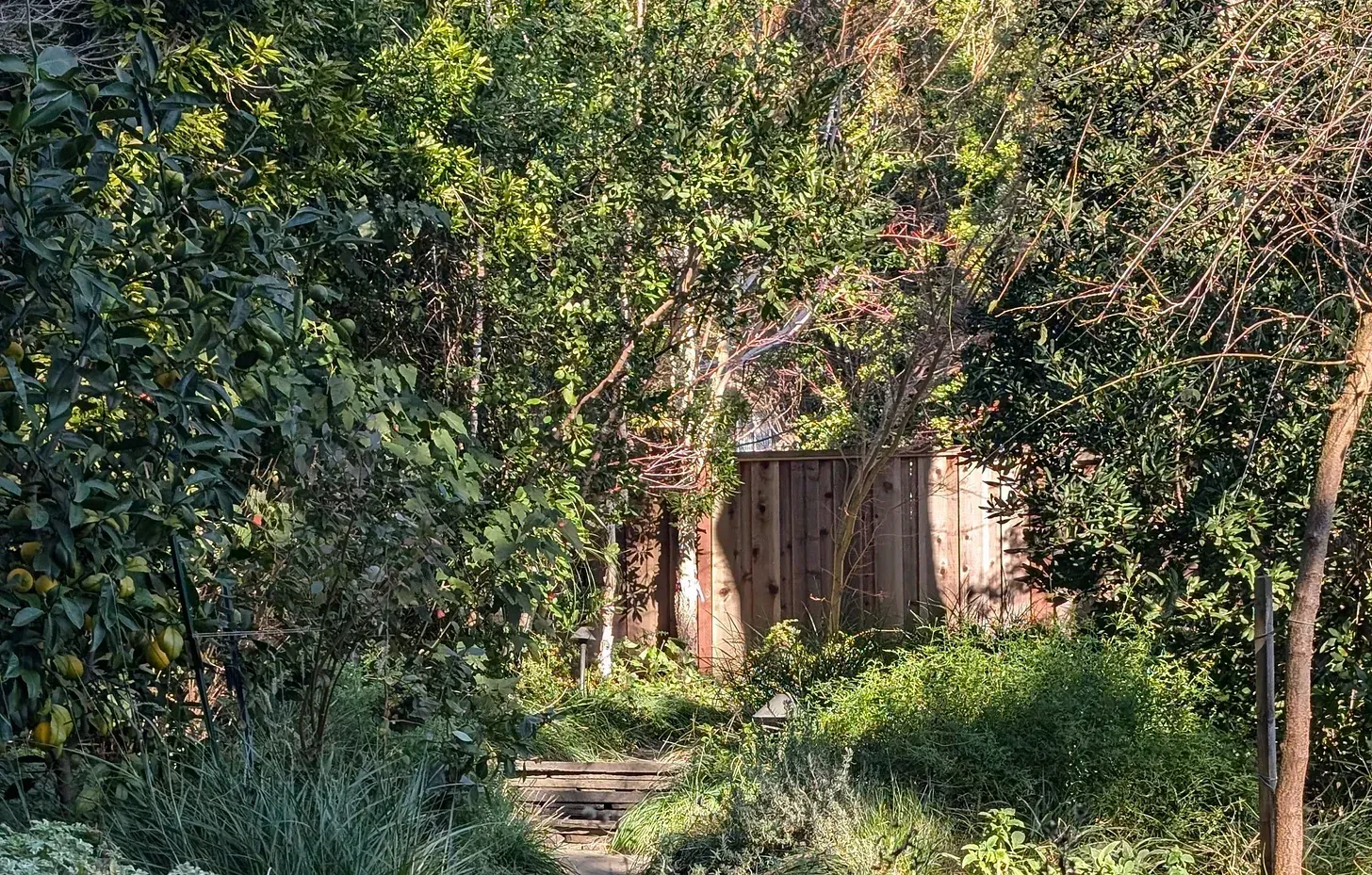
By Andrea andrea
•
April 28, 2025
Spring is an amazing time of year to witness rebirth and transformation in the garden. Buds are swelling, flowers are beginning to bloom and butterflies are starting the procession of early, mid and late seasonal emergence into the garden! All of the subtle and beautiful change that happens day to day draws us gardeners out into the garden to witness the fullness of spring. During March, we see a chorus of changes in the garden, each element playing in harmony. Paying close attention to how your garden is changing and developing during this season can help you to become a better guardian for habitat protection. In Mariposa’s newsletters and articles , we discuss that in order to protect habitat in the winter garden, one must be very careful. Many grown pollinators and butterflies, as well as their dormant eggs gather protection under the leaves and in the dried stems of flowering perennials such as Echinacea (purple coneflower) and Rudbeckia (black eyed Susan).

By Andrea Hurd
•
November 22, 2025
This past October, I was fortunate enough to go to the village of Deia in Mallorca to study the ancient local traditional dry stone building. I first came to Deia to study stone working in 2007, with The Stone Foundation for their annual Dry Stone Symposium . This was the first of several Symposiums and International training opportunities in the craft of dry stone work that I would have the privilege of attending over the next several years. Each of the workshops in Deia that I have attended (three total), were led by master stonemason, Lluc Mir, Founder of the Gremi de Margers .

By Andrea Hurd
•
November 1, 2025
Today, the Monarch butterfly migration that goes from Canada and the Northern Continental US, to their overwintering sites in Central Mexico is just about completed. November 1st also coincides with the annual Dia de los Muertos celebrations, observed in Mexico, the US, and other parts of the world. This annual return of the Monarch butterflies to their winter home is interpreted by the Purépecha of Michoacán and the Mazahua of Estado de México as the ancestors returning to visit their loved ones still on earth. The sheer number of butterflies, amounting to the millions, amassing in the Oyamil Fir trees of the region is reported to be stunning as well as magical. It is no wonder that in Mexico, people are inspired by the visually stunning return of the Monarchs as a connection between the butterflies and their ancestors returning home.

By Andrea Hurd
•
July 12, 2025
As summer unfolds, we find ourselves savoring the simple, joyful moments that our gardens bring. This season beautifully highlights our ongoing commitment to supporting urban wildlife habitats. It’s such a joy to watch butterflies dance through the flowers, birds flit among the branches, and bees busily explore each blossom. Creating gardens that nurture life is one of the most rewarding parts of being a gardener. The Beauty and Benefits of Meadows One of the best ways to invite butterflies, and other pollinators, into your garden is by planting a meadow. Not only are meadows breathtakingly beautiful, but they also provide a vital habitat for a wide variety of wildlife. A meadow’s open structure—filled with a mix of grasses, annuals, and perennials—creates a welcoming space for butterflies to find food and shelter. From marshy wetlands and mountain slopes to deserts and beyond, meadows are a part of natural landscapes all over the world. Perhaps that’s why we feel so connected to them. Lawns and open parks echo this connection, offering a familiar sense of peace and wellness that meadows inspire. Whether nestled in a wild landscape or blooming in a city garden, meadows offer butterflies both food and shelter. The greater the diversity of flowers, especially those with long and overlapping bloom times, the more butterfly species your garden will attract and support.

By Andrea Hurd
•
June 9, 2025
CHECK YOUR SOIL! Isn’t it great to feel the longer and warmer days of late Spring? I love the feeling of going outside and seeing the sun, shining brightly on all of the green leaves and beautiful flowers. It is so wonderful to feel the glow of summer approaching. What a joy to get caught up in that glow, while we watch the gardens grow gorgeously. However, that joy makes it easy to forget that here in the Bay Area, we are entering the months long dry season. Our Mediterranean climate shifts this time of year, which can transform gardens from showing lots of flowering and new green growth, to gardens where soils and plants become dry and damaged. This transition can lead to health issues in the garden over the coming weeks and months. While plants are still thriving from the lovely winter rains, the soils are now drying out. We often don’t realize that the soils are becoming too dry because at this time of year, it takes plants longer to show signs of stress. However, if we know what is about to come, we can stay ahead of the dry season and the damage that hydrophobic soils can do to our garden.

By Andrea andrea
•
May 3, 2025
With the warmer temperatures and longer days, gardens are literally bursting with hope. New leaves unfurl and early blooms emerge under the lengthening days and warming temperatures. April never fails to inspire me with its magical expression in the natural world. Each year, as this phenomenon occurs, I am delighted by the immense force that nature has to replenish and re-emerge anew. Being able to count on the small miracles of leafing out and blooming helps to give stability in an unstable world. Tending a garden is not only therapeutic for our soul, but also will help heal your local environment.

By Andrea andrea
•
April 28, 2025
Spring is an amazing time of year to witness rebirth and transformation in the garden. Buds are swelling, flowers are beginning to bloom and butterflies are starting the procession of early, mid and late seasonal emergence into the garden! All of the subtle and beautiful change that happens day to day draws us gardeners out into the garden to witness the fullness of spring. During March, we see a chorus of changes in the garden, each element playing in harmony. Paying close attention to how your garden is changing and developing during this season can help you to become a better guardian for habitat protection. In Mariposa’s newsletters and articles , we discuss that in order to protect habitat in the winter garden, one must be very careful. Many grown pollinators and butterflies, as well as their dormant eggs gather protection under the leaves and in the dried stems of flowering perennials such as Echinacea (purple coneflower) and Rudbeckia (black eyed Susan).


